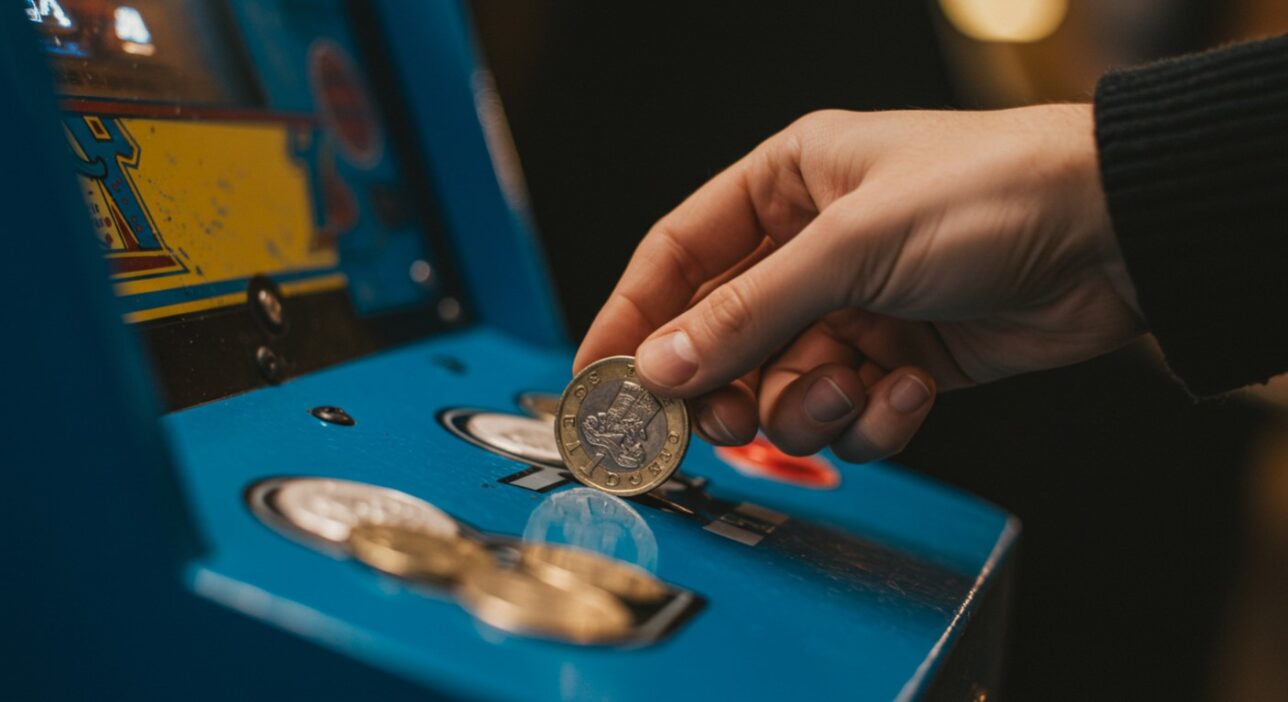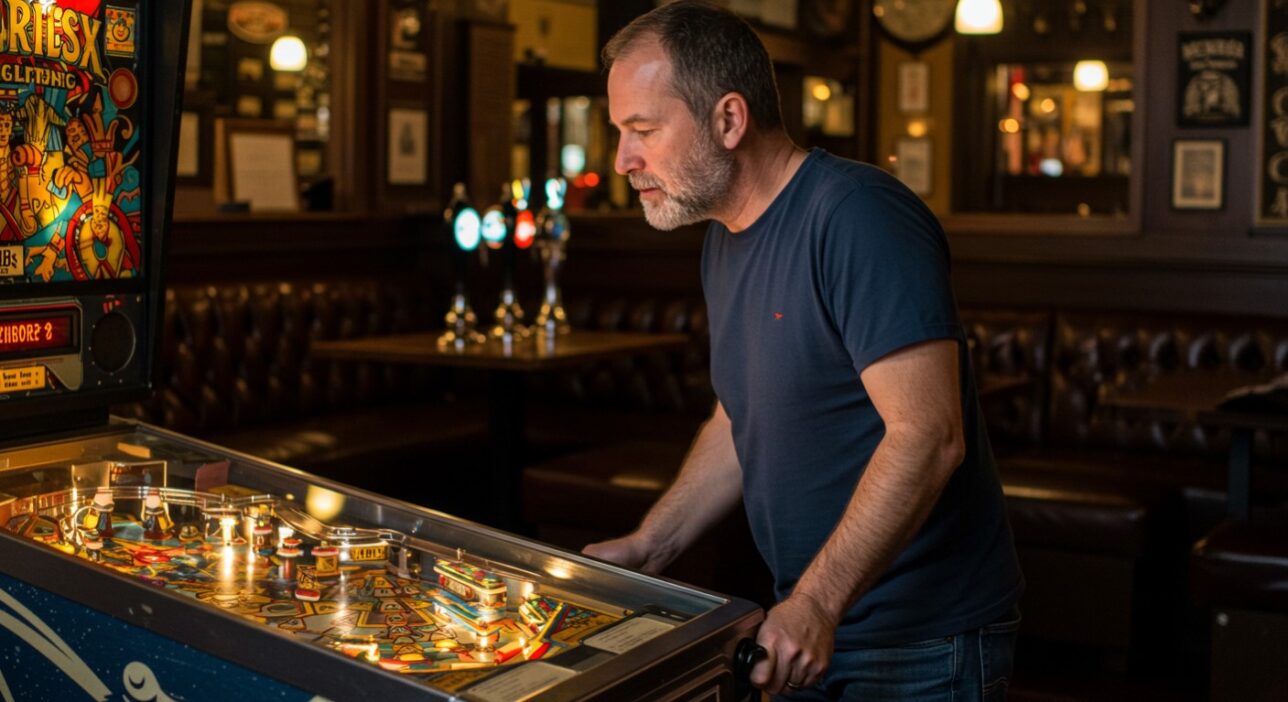
What Is an Arcade and How Does It Work?
Arcades occupy a curious and fascinating space in modern culture. They are part history lesson, part gaming hub, part social meeting place. For many in the UK, the word arcade conjures vivid memories: the smell of salt and vinegar chips after a day at Brighton Pier, the flashing lights and jingles of penny pushers in Blackpool, or the thrill of finally beating a friend at Street Fighter II in a smoky seaside hall.
For anyone wondering what is an arcade, the simplest answer is that it’s a venue filled with coin-operated machines designed for entertainment. Yet to reduce it to that definition misses the magic. The arcade is also a social environment, a symbol of technological innovation, and for many, a nostalgic slice of youth. It represents the evolution of gaming, the intersection of mechanics and imagination, and a reminder of how people once came together to play before gaming became a primarily home-based activity.
This article explores what an arcade is and how it works, tracing its history from the first coin-operated amusements of the late 19th century to the high-tech VR centres of today. Along the way, we will look at the mechanics behind arcade machines, the types of games they feature, the special role of arcades in the UK, and why, despite decades of change, they remain relevant today.
The Origins of the Arcade

Coin-Operated Curiosities
The roots of the arcade stretch back to the late 1800s, when the first coin-operated amusements appeared in public spaces. These early machines were more mechanical than digital. For a penny, you might test your strength by striking a lever, receive your fortune from a mechanical oracle, or watch a simple moving picture.
One of the earliest recorded coin-operated machines was Thomas Edison’s Kinetoscope, invented in the 1890s, which allowed a single viewer to watch a short film through a peephole. Another was the What the Butler Saw machine, which displayed risqué flip-card animations. These devices were often found in music halls, railway stations, and seaside resorts, offering quick bursts of entertainment.
The Rise of Pinball
By the 1930s, the pinball machine emerged as a dominant form of arcade amusement. Pinball evolved from earlier bagatelle games, where players guided balls into holes on a wooden board. Modern pinball added flippers, flashing lights, and electronic scoring, creating a dynamic game of skill and reflexes.
Pinball became a cultural phenomenon, though not without controversy. In some cities, it was banned for decades due to fears it encouraged gambling. In the UK, however, pinball became a staple of seaside arcades, standing proudly alongside fruit machines and penny pushers.
Seaside Arcades in Britain
In Britain, the arcade developed a distinctly seaside flavour. Resorts such as Blackpool, Brighton, Scarborough, and Great Yarmouth filled their piers and promenades with amusement halls. Families on holiday would spend rainy afternoons trying to win cuddly toys from claw machines or chasing jackpots on fruit machines.
For working-class families in particular, seaside arcades offered affordable fun and the promise—however small—of prizes. The sound of coins clinking into machines, the flashing neon signs, and the atmosphere of excitement became synonymous with the British summer holiday.
The Golden Age of Arcade Gaming
Video Games Arrive
While pinball reigned for decades, the arrival of video games in the 1970s changed everything. The release of Pong in 1972 marked the beginning of arcade gaming as we know it. Soon, arcades were filled with brightly lit cabinets offering new digital experiences.
The late 1970s and 1980s became the golden age of arcades. Titles such as Space Invaders (1978), Pac-Man (1980), Donkey Kong (1981), and Galaga (1981) defined the era. These games were easy to learn but difficult to master, making them addictive and competitive. High scores displayed on-screen encouraged players to return again and again, determined to etch their initials into local legend.
Social Hubs for Young People
For teenagers, arcades became essential hangouts. In the UK, local shopping centres often hosted small arcades, while larger towns had dedicated venues. They were places to meet friends, challenge rivals, and spend pocket money in bursts of adrenaline and frustration.
The arcade was not just about gaming but about belonging. Players developed reputations for their skills at particular machines. Crowds gathered to watch a skilled player beat a difficult level or defeat challengers in Street Fighter II. Arcades fostered a sense of community long before online gaming existed.
Popularising Video Games
Arcades were crucial in popularising video games before home consoles caught up. Early consoles like the Atari 2600 or ZX Spectrum could not match the power of arcade machines. If you wanted cutting-edge graphics, sound, and gameplay, you had to go to an arcade. For many, these experiences created lifelong gamers.
How Arcade Machines Work

Coin and Token Systems
At the heart of every arcade machine lies its payment mechanism. Traditional machines accepted coins, with mechanisms that could distinguish between sizes and weights. Some arcades introduced tokens, purchased at a counter, to simplify operations and encourage bulk spending.
In recent decades, many arcades have shifted to card-based systems, where players load credits onto a swipe card. This modern approach reduces coin jams and makes it easier to track spending, but some argue it removes a little of the tactile charm of dropping a coin into the slot.
Cabinet Design
Arcade machines are built into cabinets, which vary in design:
-
Upright cabinets are the most common, featuring a vertical screen and control panel at standing height.
-
Cocktail tables allow players to sit opposite each other, with the screen embedded in a glass-topped table. These were popular in pubs during the 1980s.
-
Deluxe cabinets offer immersive experiences, such as racing simulators with full seats, steering wheels, pedals, and surround sound.
Each cabinet houses not only the display and controls but also the hardware that runs the game. Early arcade games used custom circuit boards, while modern machines often rely on PC-based systems.
Behind the Scenes: Maintenance and Operation
Running an arcade requires constant upkeep. Buttons wear out, joysticks loosen, and screens drift out of calibration. Mechanical games like pinball need regular servicing to keep flippers, bumpers, and lights working.
Operators also manage the economics of arcades. Machines must be placed strategically to attract attention. Redemption games need prize stock replenished. Coin hoppers must be emptied regularly. In many ways, arcades are as much about logistics and maintenance as they are about games.
Types of Arcade Games
Arcades offer a wide spectrum of experiences.
Video Games
-
Shooters: From Galaga to Time Crisis, these require reflexes and precision.
-
Platformers: Games like Donkey Kong laid the foundation for future home-console hits.
-
Fighting Games: Titles like Street Fighter II and Tekken created competitive communities.
-
Rhythm Games: Dance Dance Revolution and Guitar Hero brought music into the mix.
Pinball Machines
Pinball remains a favourite, with enthusiasts treating each machine as a work of art. The combination of mechanical engineering, artwork, and sound creates a unique experience unmatched by video games.
Redemption Games
These include penny pushers, claw machines, and ticket-based games. In the UK, seaside arcades thrive on these machines, where players trade stacks of tickets for prizes.
Driving and Immersive Games
From Out Run to Mario Kart Arcade GP, driving games use full-size steering wheels, pedals, and sometimes hydraulic platforms. These machines emphasise spectacle and immersion.
Arcades in the UK Context

Seaside Traditions
British seaside towns became synonymous with arcades. Blackpool’s Golden Mile is perhaps the most famous, but Brighton Pier, Weston-super-Mare, and countless other towns boasted arcades filled with flashing machines. For generations, no holiday was complete without a few hours spent in the arcade.
Popularity in the 1980s and 1990s
Arcades thrived even as home gaming grew. In the UK, venues like the Trocadero in London offered vast collections of machines. The competitive atmosphere of fighting games in the 1990s brought new waves of players.
Transition to Family Entertainment Centres
As traditional arcades declined, many UK venues evolved into family entertainment centres. These combined arcades with bowling alleys, cinemas, and soft play areas. Though different in character, they preserved some of the arcade spirit for new generations.
The Decline and Transformation of Arcades
Impact of Home Consoles
The rise of powerful home consoles in the 1990s and 2000s changed the landscape. Consoles like the PlayStation and Xbox offered arcade-quality graphics at home. PC gaming also expanded, offering deep and complex games that arcades could not match.
Changing Habits
Young people increasingly spent time online, and the social function of the arcade declined. Many small-town arcades closed, unable to compete.
Survival Through Nostalgia
Despite the decline, arcades never disappeared. Retro gaming became popular in the 2000s, and adults sought out the experiences of their youth. Retro arcades, gaming bars, and themed venues appeared, blending nostalgia with nightlife.
Modern Arcades and Their Future
Arcade Bars and Retro Venues
Cities like London, Manchester, and Bristol now boast “barcades”: venues where classic machines are paired with food, drink, and social spaces. These attract both nostalgic adults and curious newcomers.
VR and Immersive Experiences
New technology has revitalised the arcade model. VR arcades offer experiences impossible at home, such as multiplayer zombie shooters or full-motion racing simulators.
Blending Old and New
Modern arcades often mix classic cabinets with new attractions. You might play Pac-Man on one side of the room and step into a VR headset on the other. This mix ensures arcades remain culturally relevant.
The Social Advantage
Perhaps most importantly, arcades offer face-to-face social interaction. Whether competing for high scores, dancing side by side, or cheering a friend’s claw machine victory, the social buzz of arcades keeps them alive.
Conclusion: Why Arcades Still Matter

So, what is an arcade? It is a venue, a culture, a piece of living history. From penny machines in Victorian halls to VR arenas in modern cities, the arcade has constantly reinvented itself.
In the UK, arcades remain tied to seaside holidays, childhood memories, and a sense of community. They represent the evolution of gaming but also a timeless truth: people love to play together.
Arcades still matter because they blend nostalgia, social connection, and innovation. They remind us that entertainment is not only about screens and scores but also about laughter, competition, and shared moments. Whether you’re revisiting Blackpool’s Golden Mile or stepping into a neon-lit retro bar in London, the arcade endures as a unique and important part of leisure culture.


